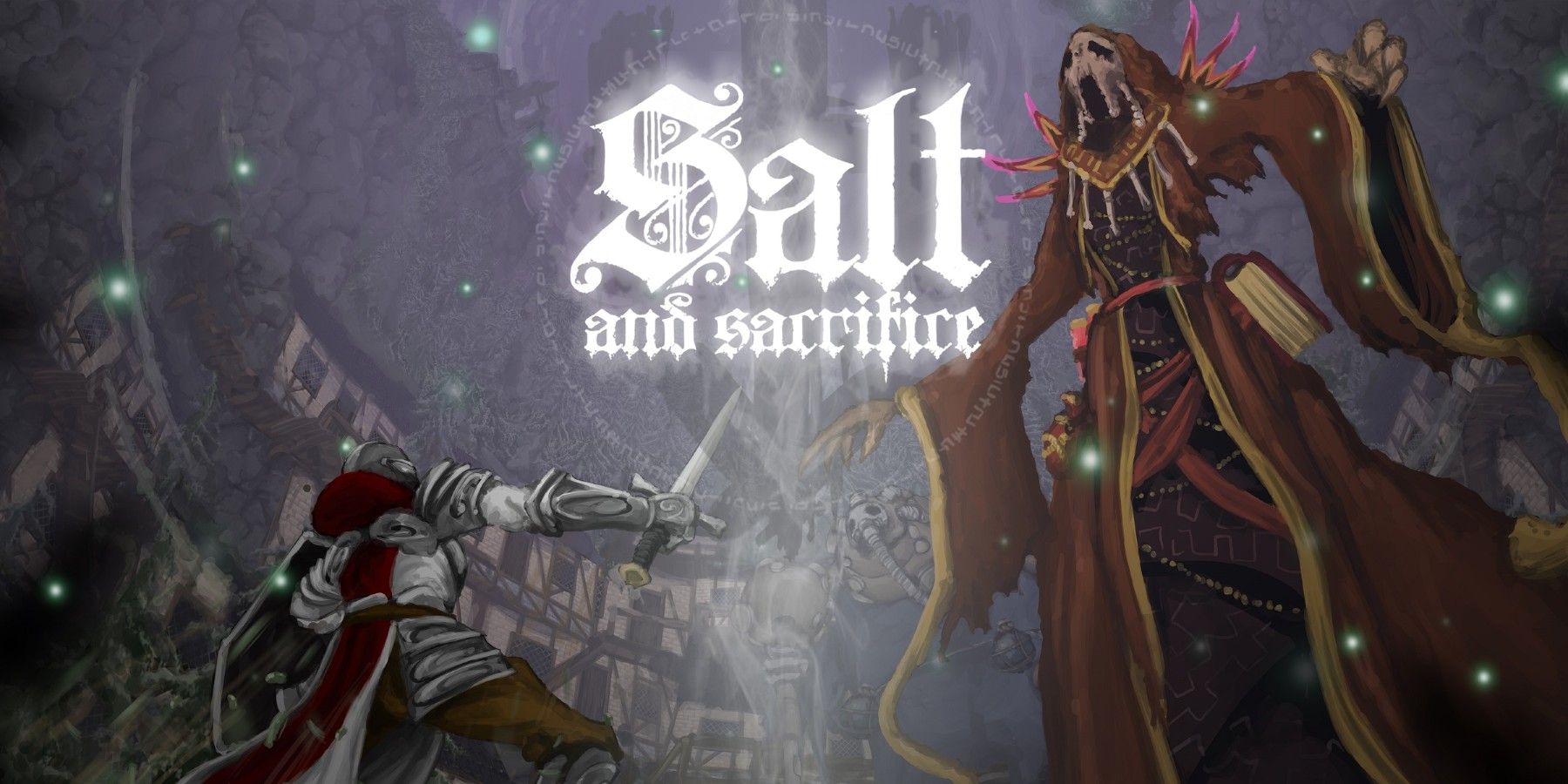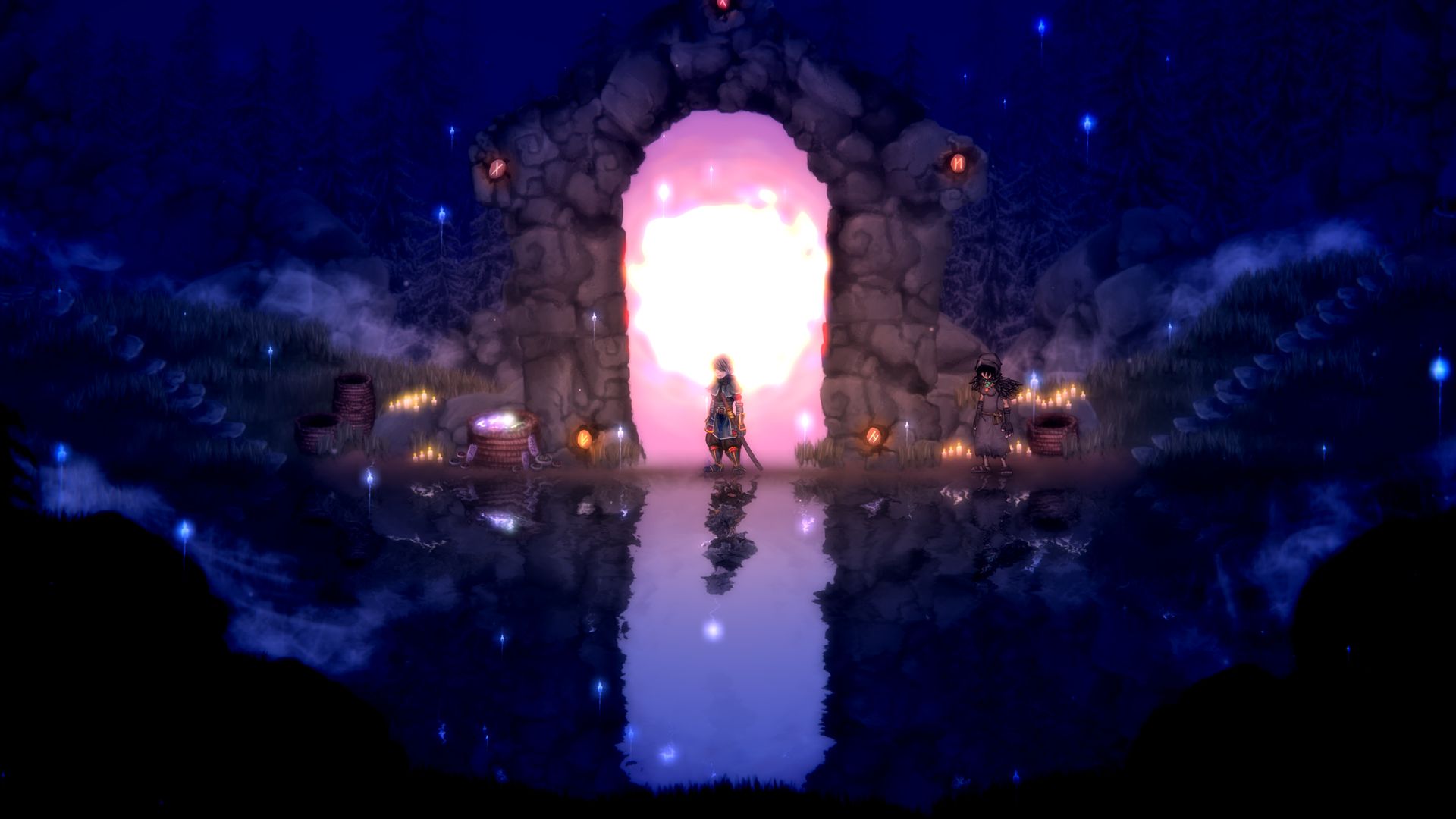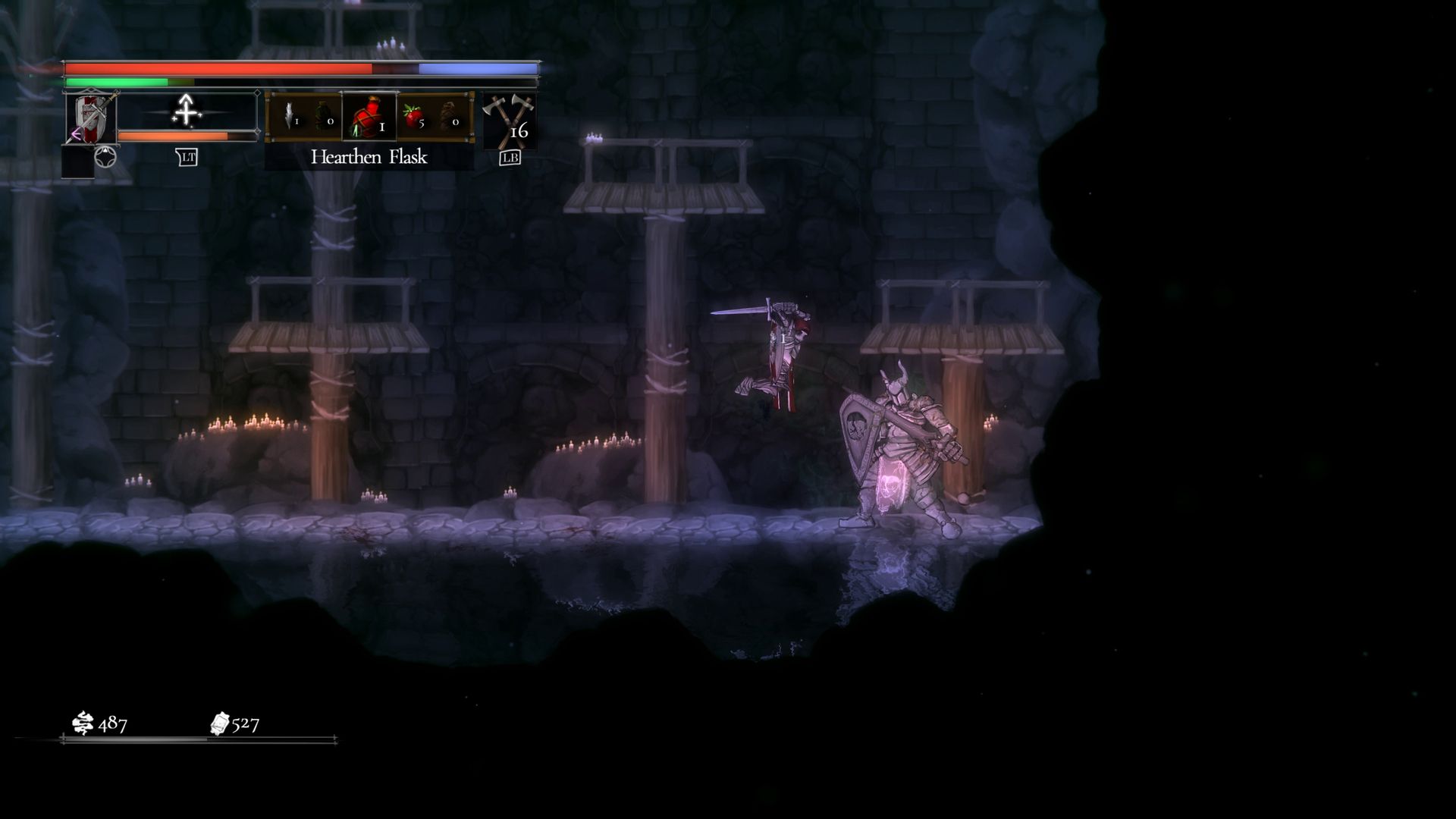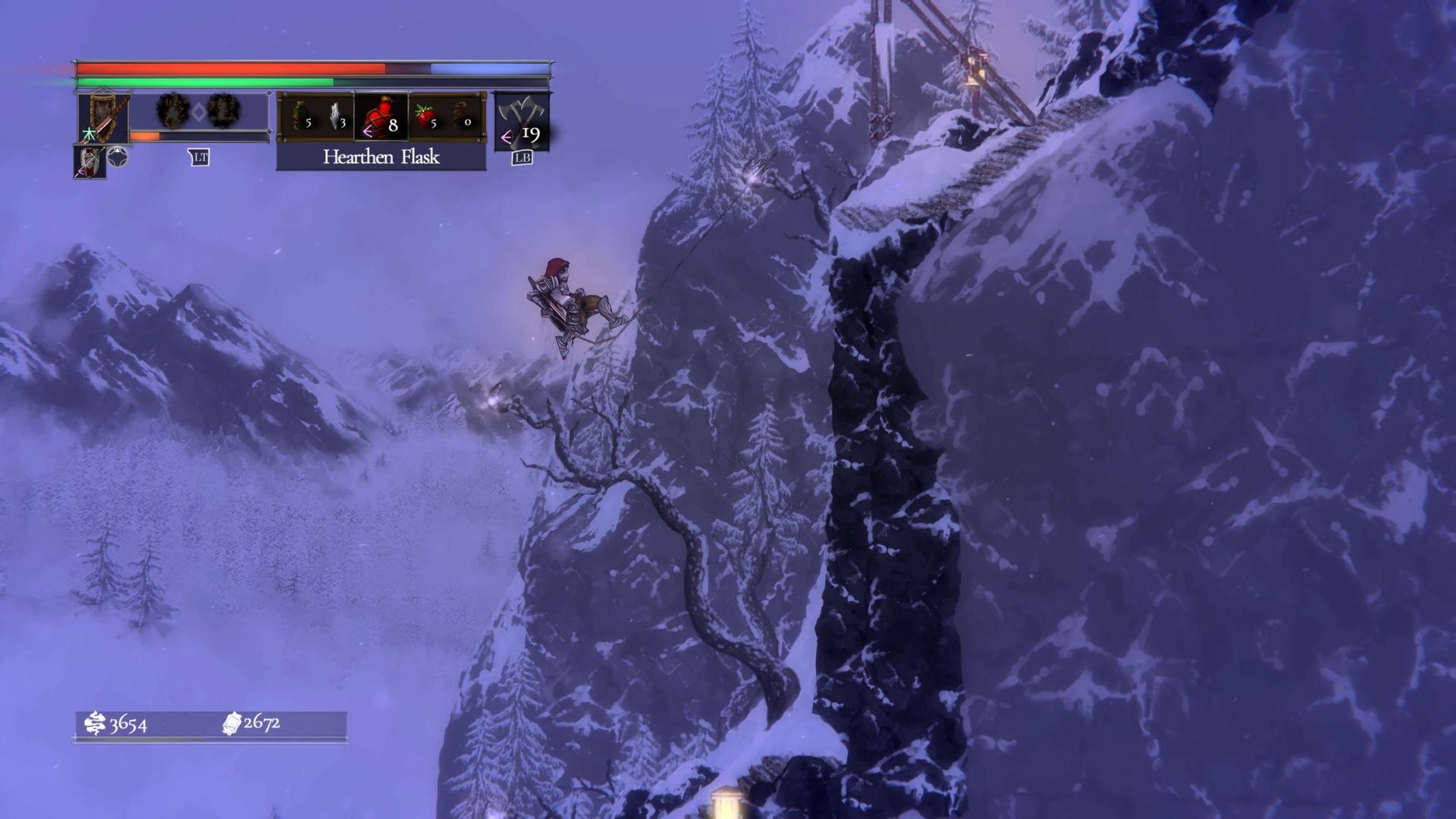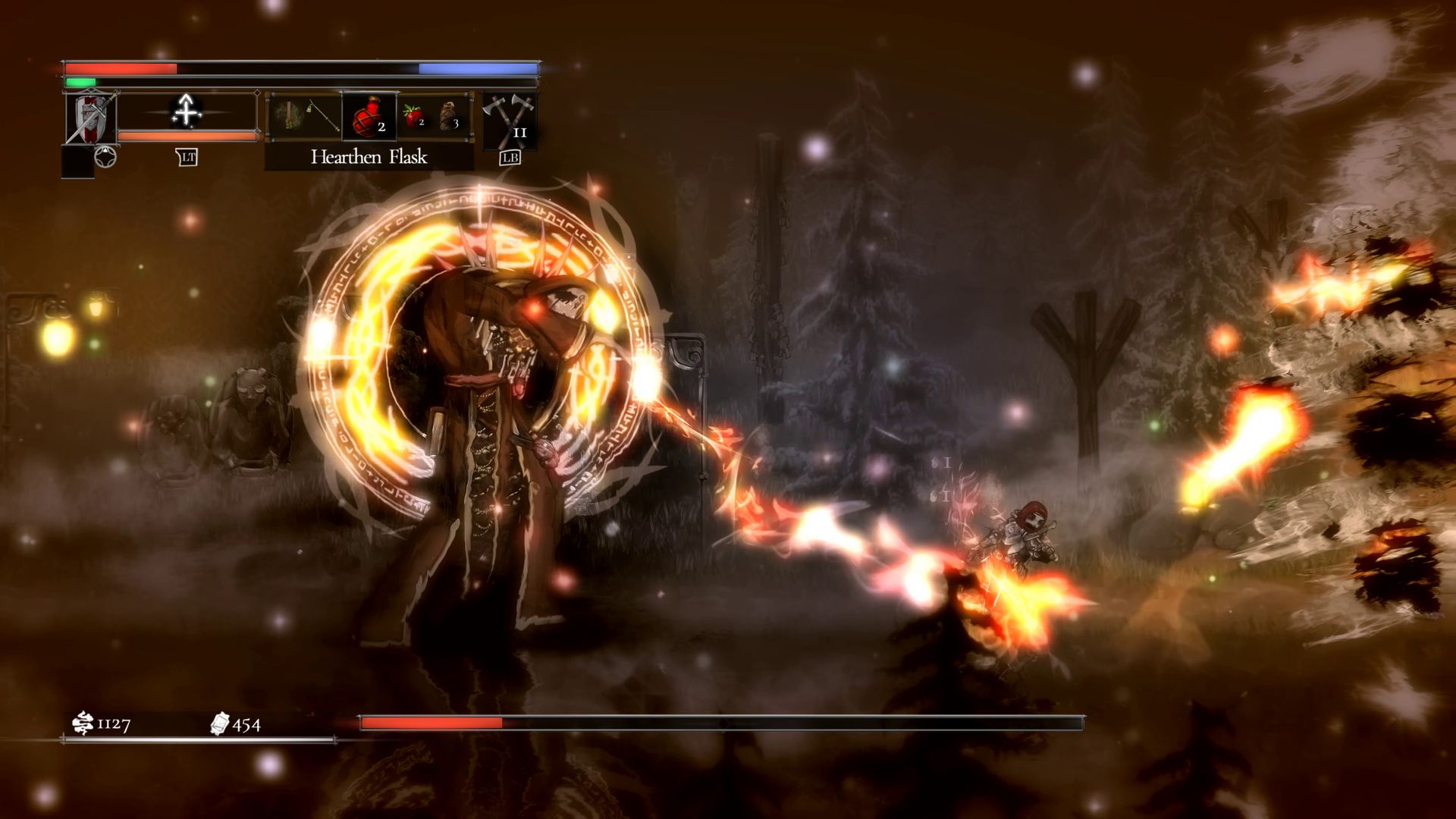When Ska Studios released its sleeper hit Salt and Sanctuary in 2016, the small indie team made it abundantly clear that they understood the key fundamentals to an engaging Souls-like experience featuring all the genre staples that hardcore action RPG fans crave. With Salt and Sacrifice, Ska Studios returns with the help of Devoured Studios to deliver another excellent 2D reimagining of Dark Souls, this time with a more profound focus on world exploration and a Monster Hunter-like approach to boss fights.
From the start, Salt and Sacrifice will be familiar to any fans of Souls-like games, as players are slain within minutes of creating a new character and choosing a starting class. The Marked Inquisitor is neither living nor dead but is a reanimated soul that finds itself routinely dying and spawning throughout a once-peaceful world now wrought with chaos. Only through utilizing Guiltless Shards, acquired through boss fights, and collecting Salt from slain enemies, which are used as the game’s leveling currency, can the Inquisitor grow strong enough to fix Salt and Sacrifice’s dreary Altarstone Kingdom. It's an all-too-familiar storyline and set of mechanics for anyone that has spent time in FromSoftware games.
However, the similarities don’t end there. Common Souls mechanics like the Estus Flask, now named the Hearthen Flask, and bonfires, now called Obelisks, take up the healing and resting roles for players tackling the brutal world of Salt and Sacrifice. The game also features a central hub area from which players can increase their character traits along a branching skill tree and access a teleporter to reach new zones, akin to 2015’s Bloodborne.
The multiplayer component is new for Salt and Sacrifice, offering players the chance to call in some help in taking on the game’s multiple bosses or to partake in PvP action. Much like Covenants in Dark Souls, players have the opportunity to join various factions like the PvE-focused Blueheart Runners or PvP-focused Shroud Alliance. While missable and not essential to Salt and Sacrifice’s main story, factions add a neat role-playing element to the game and expand replayability across multiple save files.
Visually, Salt and Sacrifice still retains much of its flash game-inspired art style but with new player and enemy character models. Where previously Salt and Sanctuary presented a very foreboding and dreary atmosphere, painted with monochromatic color tones and dimly lit environments, Salt and Sacrifice injects a new layer of color into its settings. Every zone pops with more vibrancy than before, and the cartoon-inspired visual style benefits from it greatly while still effectively delivering a world on the brink of collapse.
Salt and Sacrifice’s most notable deviation from its Souls-like inspirations come from its 2D nature, taking the sprawling and intricate level design of FromSoftware titles and translating it into a sidescrolling adventure. The result is a compelling series of levels ranging from destroyed towns, underground crypts, and snowy mountain tops that expand vertically and horizontally with crypts and dungeons. Salt and Sacrifice takes concepts that Souls games frequently dabble in, such as the rigid platforming and booby traps of Sen’s Fortress, and expands upon them as the main challenge in world traversal, occasionally to a fault.
While the classic platforming feeling of Salt and Sacrifice is often fun and keeps players on their toes, it does manage to feel dated in some regards. From a level design standpoint, Salt and Sacrifice still feels as if it is working within the playbook of the first iteration of Souls-like games. In a post-Elden Ring world where Souls-likes are beginning to rely more on interesting bosses and mastery over combat mechanics as the driving force for a challenge, Salt and Sacrifice leans into using booby traps and surprise attacks to chip away at the player’s health.
Frustratingly, Ska Studios makes many of these traps extremely subtle, often blending into the scenery so well that only upon repeated deaths and backtracking through the game’s levels will players know precisely where each trap is. For experienced Souls-like players, these design principles all may sound like a core part of the Souls-like experience. However, to newcomers fresh out of Elden Ring or Tunic, it could add a layer of frustration or even a sense of feeling "cheap" as Salt and Sacrifice still dogmatically follows the original Dark Souls style level design.
Combat in Salt and Sacrifice also deviates from the standard bumper button-based inputs of many Souls-likes, shifting to a combo-oriented system using the face buttons. Each weapon in the game has its own unique combos requiring players to alternate between light and heavy attacks to potentially stun an enemy as their poise breaks or even uppercut them into the air. No two classes play alike in Salt and Sacrifice, offering plenty of replayability for players embarking on multiple playthroughs. Additionally, the game’s rather forgiving skill tree, featuring numerous opportunities to respec, all amount to Salt and Sacrifice being a highly versatile game in terms of build crafting.
Players will spend plenty of time backtracking through Salt and Sacrifice’s five main regions due to Ska Studios leaning into Metroidvania-style platformer mechanics compared to its more linear predecessor. Scattered throughout the world are various Inquisitor tools, which unlock new traversal mechanics that will make seemingly mundane pieces of the landscape all make sense once the player has discovered how to interact with them appropriately. Going back and exploring old areas with new tools is always a worthwhile venture, as Salt and Sacrifice rewards exploration with plenty of loot and, most importantly, more boss fights.
Among the game’s various minor bosses that dot each region are the pivotal Mage Hunts: prolonged excursions where the Spellmarked Inquisitor follows the trails of the chaos-inducing Mages, eventually leading to a boss fight and culminating with the Iinquistor devouring their hearts. These Mage Hunts are of great importance to the player, as hearts unlock new doorways and Mage Trails leave behind high-level enemies carrying critical crafting materials. Every Mage uniquely employs a themed power such as fire, earth, wind, or even fungus. However, despite plenty of variance in elemental powers, art style, and henchmen for each Mage, these excursions feel quite monotonous towards the tail end of Salt and Sacrifice.
Past the opening jitters of challenging a new boss, players will find that most bosses use the same three attack types: an AOE attack, a homing missile barrage, and a standard physical strike, all of which are openly telegraphed and dodge-able. More than anything, Salt and Sacrifice becomes an exercise in stamina management and zoning when it comes to most Mages compared to boss fights in other Souls-likes, where the 3D plane allows for far more intricate movesets and a higher skill ceiling for combat.
That’s not to say that bosses in Salt and Sacrifice are leisurely affairs. Fights can get frantic when bosses unleash a quick series of AOE attacks and homing missiles within the game’s claustrophobic arenas, often pushing players into seemingly impossible situations. Though, after a certain point with a high leveled and focused build, these Mage fights start to blend together mechanically.
Additionally, Salt and Sacrifice's hitboxes are not well defined, and attacks tend to reach a good deal past perceived points of failure. Hitbox problems are made worse when the game’s low frame rate cartoon aesthetic comes into play, creating a layer of challenge that occasionally feels independent of player skill level. Even the most patient Souls fans could find themselves gritting their teeth when an enemy attack lands in a spot where they presumed themselves safe and subsequently get thrown across the screen or, even worse, off a cliff.
However, despite Salt and Sacrifice’s shortcomings with repetitive boss battles, less refined hitboxes, and a few dated world design elements, it's still a remarkably entertaining game to play. Even if its key gameplay loop starts feeling repetitive towards the end, the game doesn't overstay its welcome and wraps up just when needed.
Overall, Salt and Sacrifice still nails the core elements that make a 2D reimagining of Dark Souls a compelling idea thanks to its fundamental understanding of how character and level progression should flow and its expansive combat system. By adding in an extra layer of Metroidvania-style exploration and a unique approach to boss encounters with its Mage Hunt mechanic, Salt and Sacrifice sees Ska Studios carve out a space for itself as more than the studio that is good at making 2D Dark Souls games.
Salt and Sacrifice releases May 10 for PC, PS4, and PS5. Game Rant was provided a PC code for the purposes of this review.

